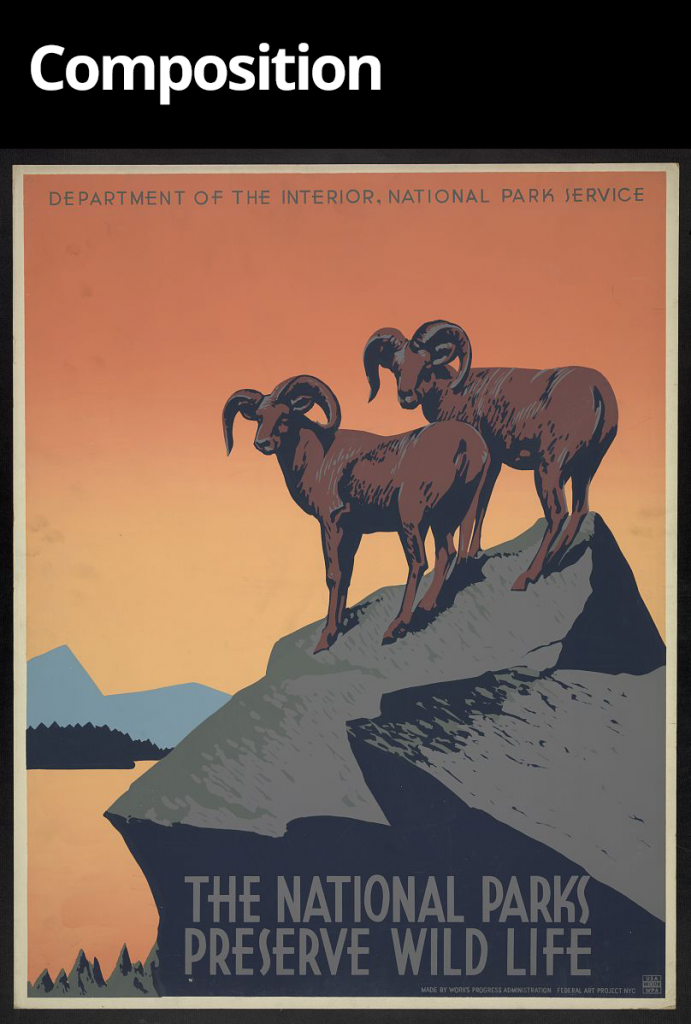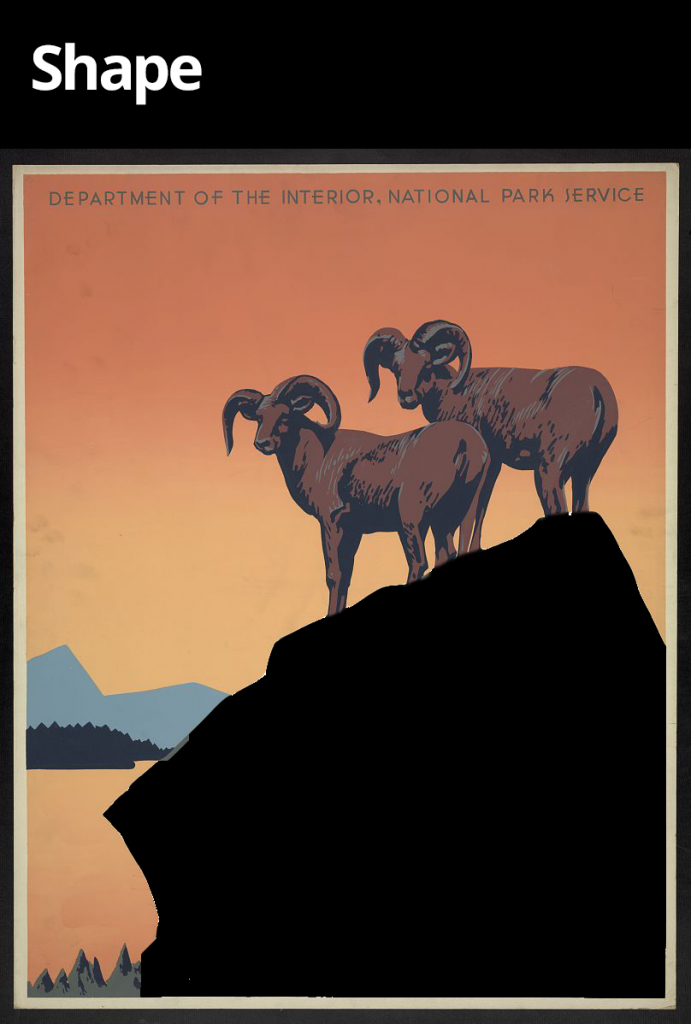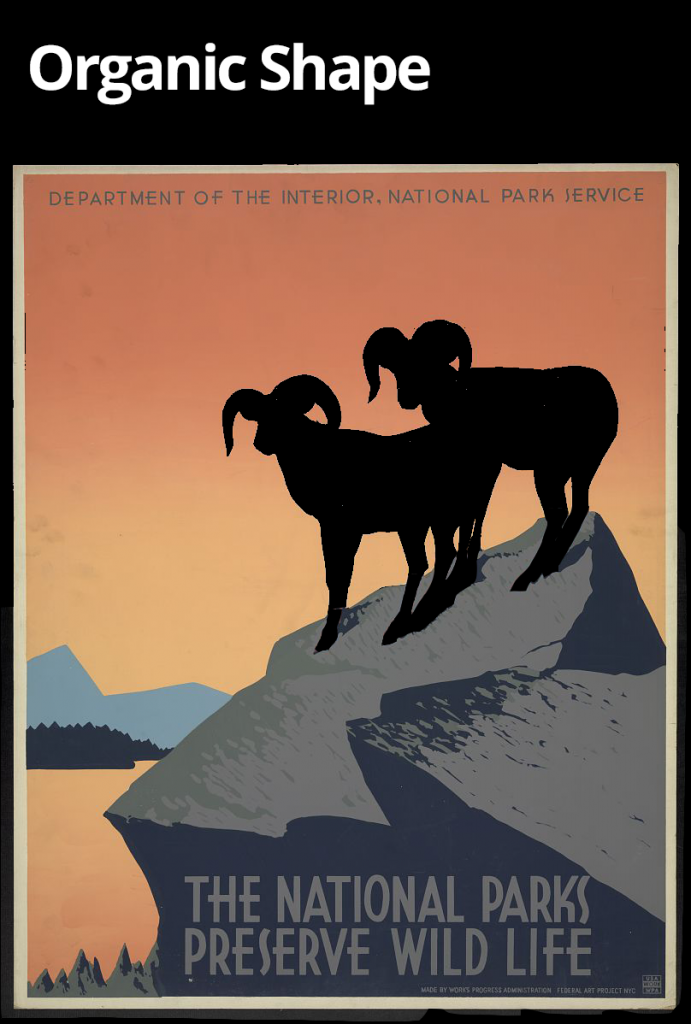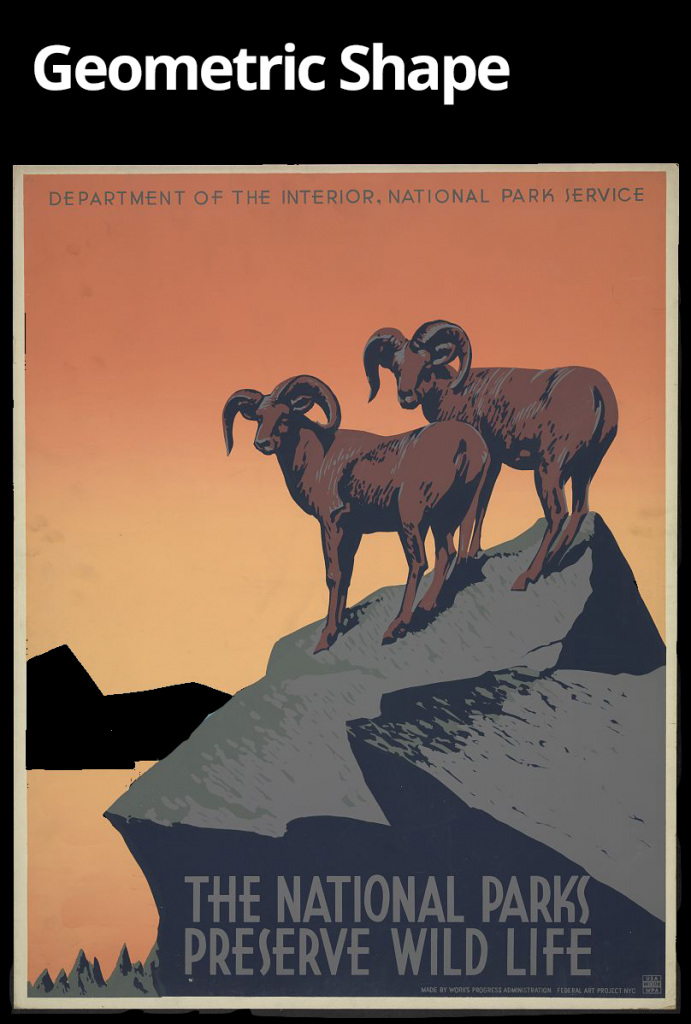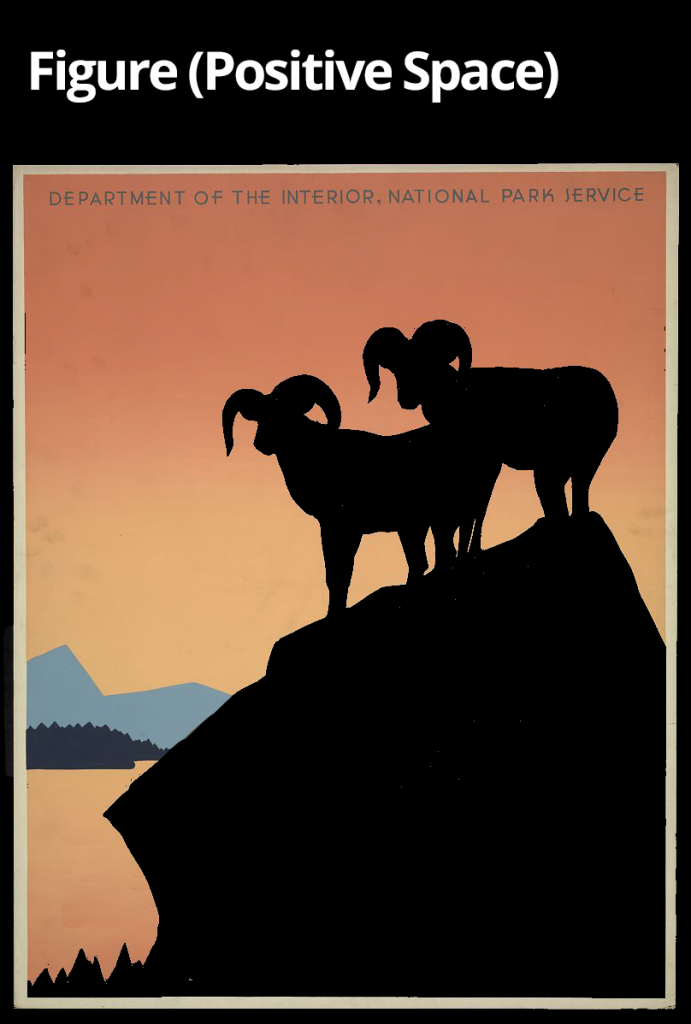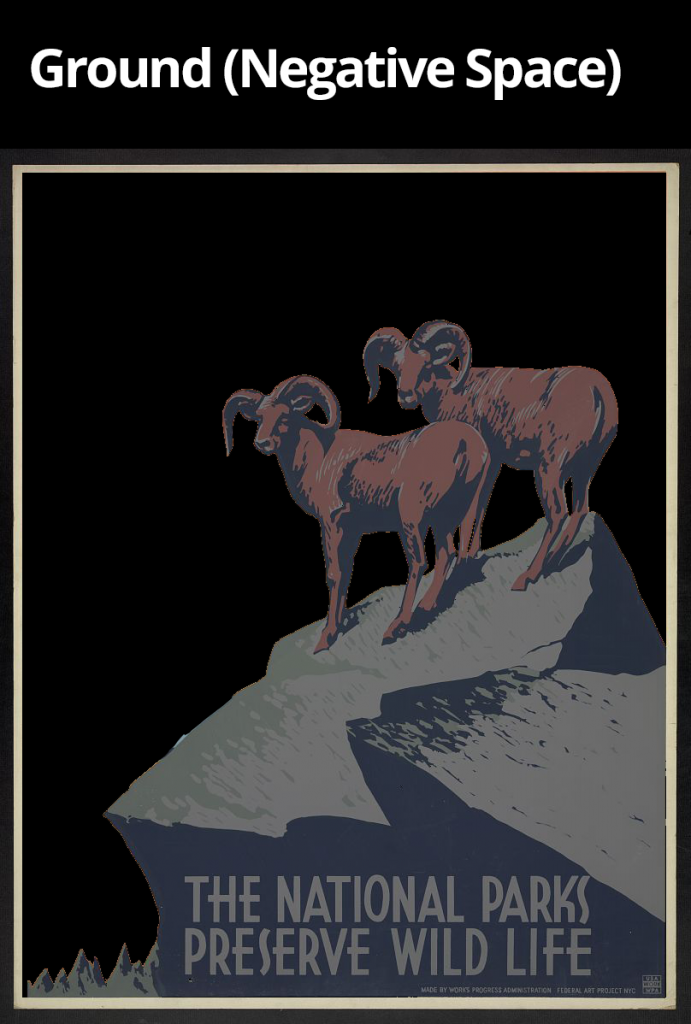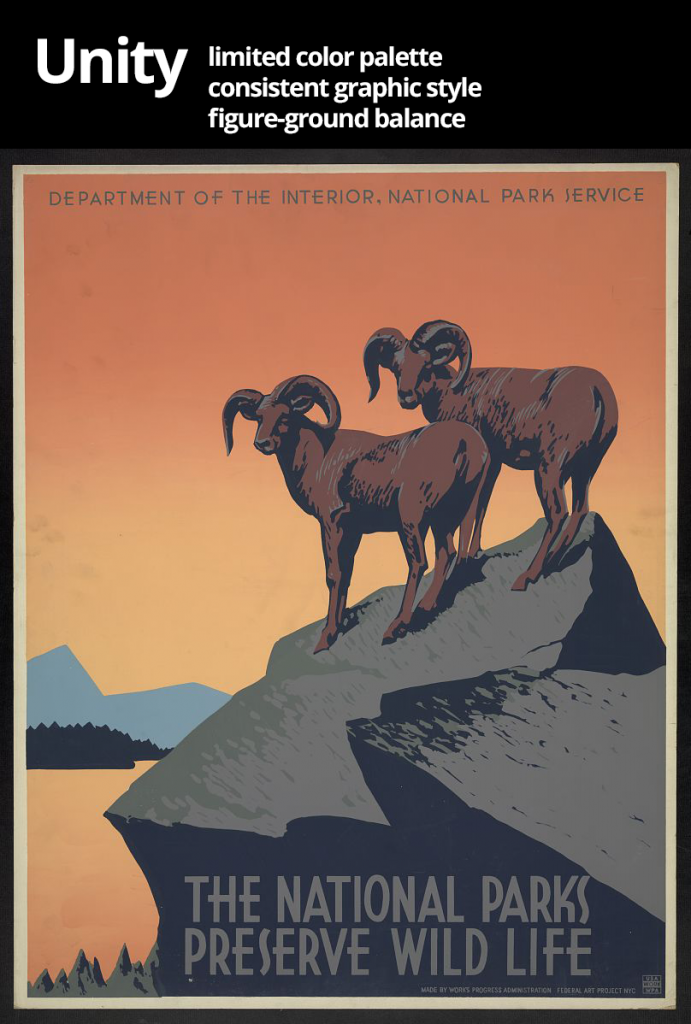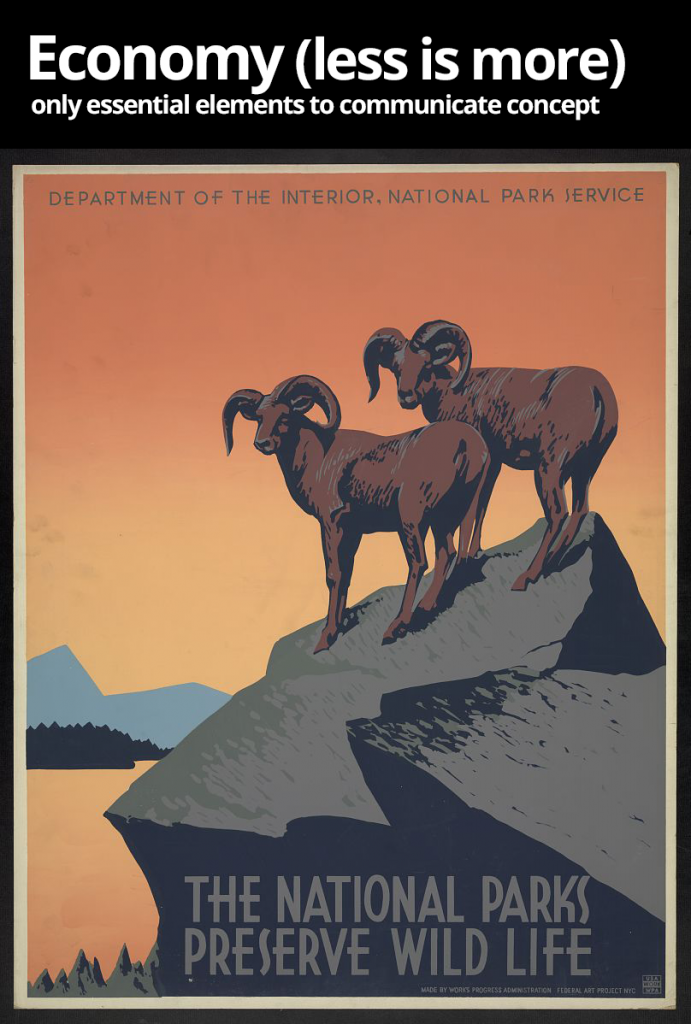Contents
Homework Due
- Become a member of our OpenLab course!
- Contribute to the Visual Library using the photographs from our walk or something else that inspires you.
- Review Course Documents.
Materials Needed Today
- sketch book (9″x12″)
- graphite drawing pencils (6B, 2B, HB, 2H, 4H)
- pencil sharpener (basic metal)
- eraser (magic rub, mars, gum or similar)
- small box or bag for your supplies (find or reuse)
Class Discussion (30 min)
What is Design?
To design is to plan or arrange elements in order to communicate a thought, feeling, or concept. Design can also be described as the organization of information. This information can be visual, aural, informational, or tactile.
The products of design are compositions — arrangements of elements. We will focus primarily on the arrangement of visual elements in this course, but we will also consider how all our senses affect how we interact with and understand the world.
Why Learn Design?
A good designer, independent of the medium (data, sound, pixels, paint, wood) has a significant advantage in the world. If you choose a design career and develop your creative vision, you can influence what people see/feel/do.
“We can change the world, only once we accept that it’s the everyday, mundane work of design that has the potential to stir change. And it’s the everyday work of a designer that requires your focus, your intuition, your curiosity, your love.”
Bill Chung, On design changing the world
What Kind of Careers?
There are many interesting opportunities for designers, but learning how to think creatively is useful for every career. Here are some careers that our Communication Design program can prepare you for:
- Graphic Design
- Advertising Design
- User-Experience Design
- Interface/Web Design
- Information Design
- Animation/Motion Graphics
- Broadcast/Video
- Photography
- Illustration
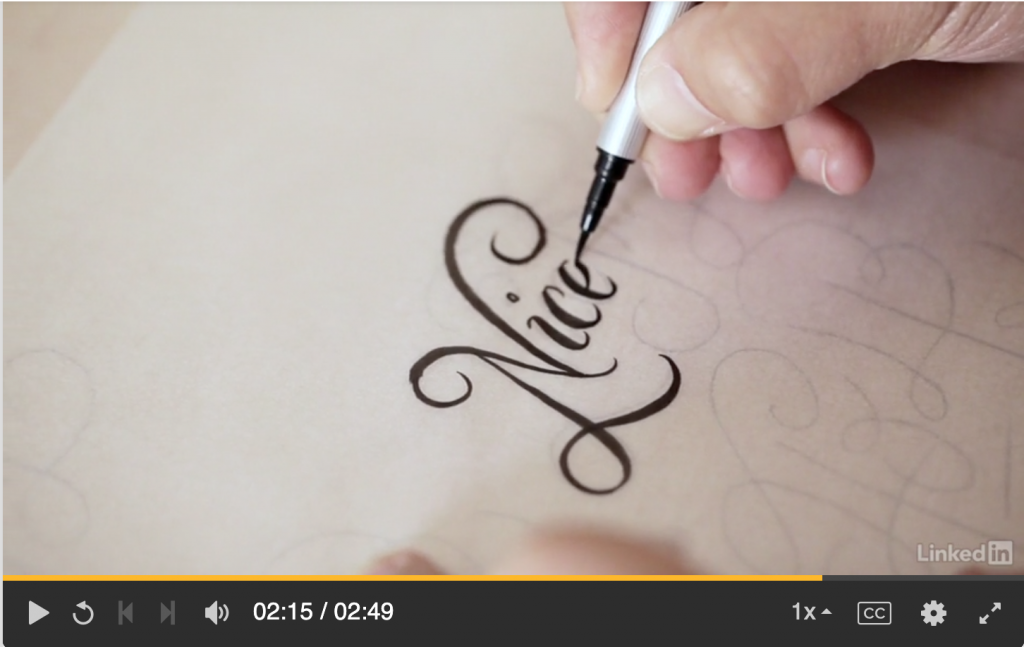
[Access with NYPL card]
How do you become a good designer?
First you must learn the fundamental principles. When building a sturdy house you need a strong foundation. When learning a new language you need to master grammar and vocabulary. It takes patience, attention to detail, dedication, and most importantly, staying curious.
What is curiosity?
Curiosity, in this context, is desire to learn more. Good designers are inquisitive investigators with a strong internal motivation to solve problems. Designers love a challenge. They use all of their senses to find inspiration and solutions to design problems. Like a scientist they research, experiment, get feedback, and repeat– until they arrive at the best solution to the design problem they face. Their first idea is rarely the best solution. A good designer follows a design process and practices design thinking.
What is a Design Process?
A Design Process is the workflow a designer uses. Following a clear design process gives structure to a design problem and helps to bring an idea from conception to final delivery. It is especially helpful when collaborating with others. Incorporating design thinking into the design process helps designers to understand the needs of those you are designing for.
The primary design process we will follow in this class is:
Discover: Ideation and Experimentation
Define: Iteration and Feedback
Develop: Refine and Execute
Deliver: Professional verbal, written, and visual presentation; critical reflection
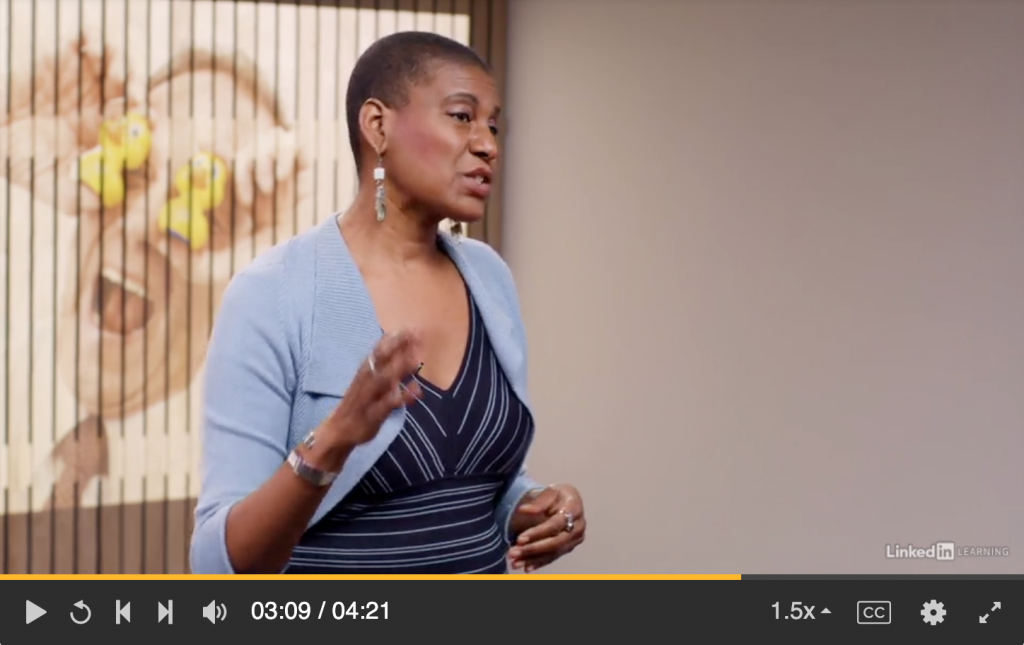
[Access with NYPL card]
Vocabulary (30 min)
- Composition: The formal organization of elements in a composition arranged according to principles that will support the communication of the concept.
- Frame: This boundary (rectangle, square, circle) is represented by the edges of the paper or the margins drawn within.
- Shape: Created by line (contour) or a grouping of points, it is an area that is separate from other areas, defined by its perimeter.
- Organic shape: is one that resembles the flowing contours of an organism.
- Geometric shape: such as circles, triangles or squares often have precise, uniform measurements.
- Figure (positive space): The shape of a form that serves as a subject in a composition.
- Ground (negative space): The space surrounding a positive shape or form; sometimes referred to as ground, empty space, field, or void.
- Unity: Refers to the cohesive quality that makes a composition feel complete and finished. Unity gives it the feeling that all the elements relate to each other in a compatible way to form a unified whole.
- Economy: Using only the elements necessary to communicate an idea, emotion, or formal concept. Less is more.
Break (15 min)
- Sign up for a meeting with Prof. Spevack
Visual Library Review (15 min)
Let’s take a look at the images you posted to the class blog and try to talk about them using some new vocabulary.

Ken 
Ken 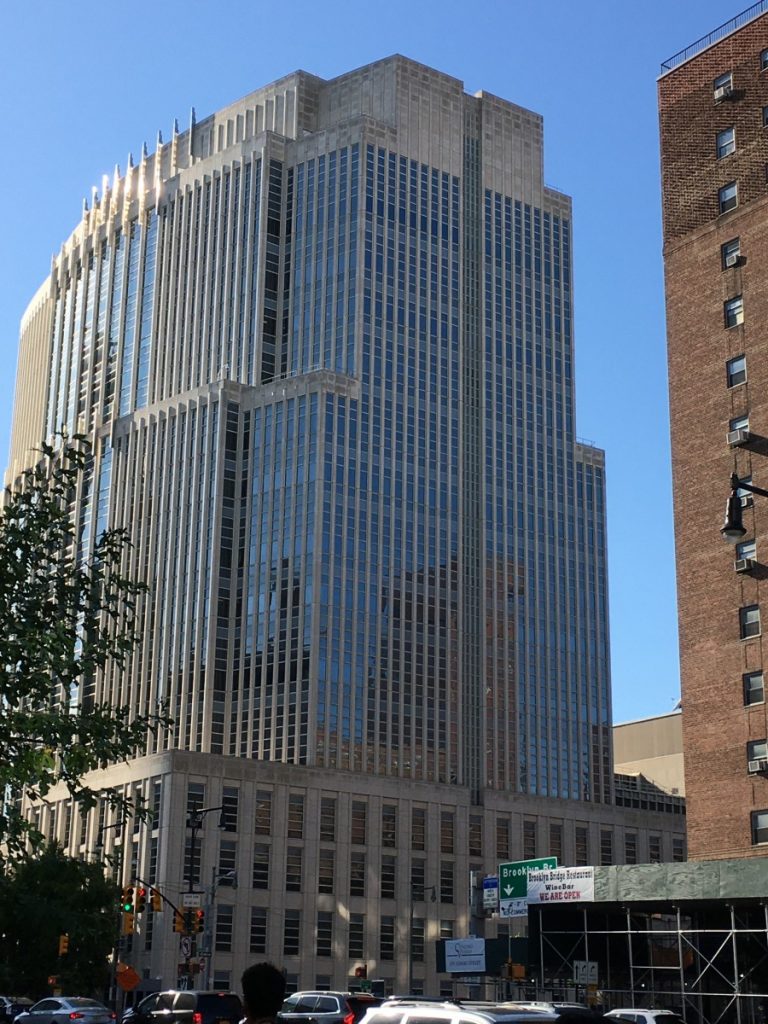
Samson Charles 
Belen Vazquez 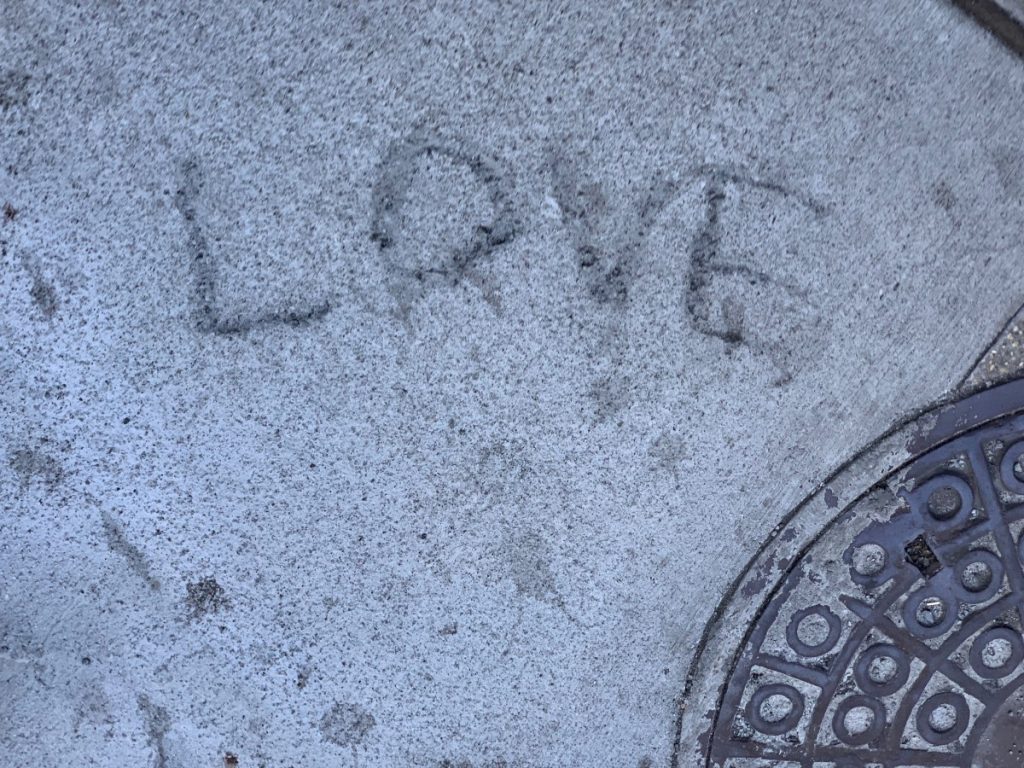
Kevin Lezama 
Danny Zhao 
Cui Zhang 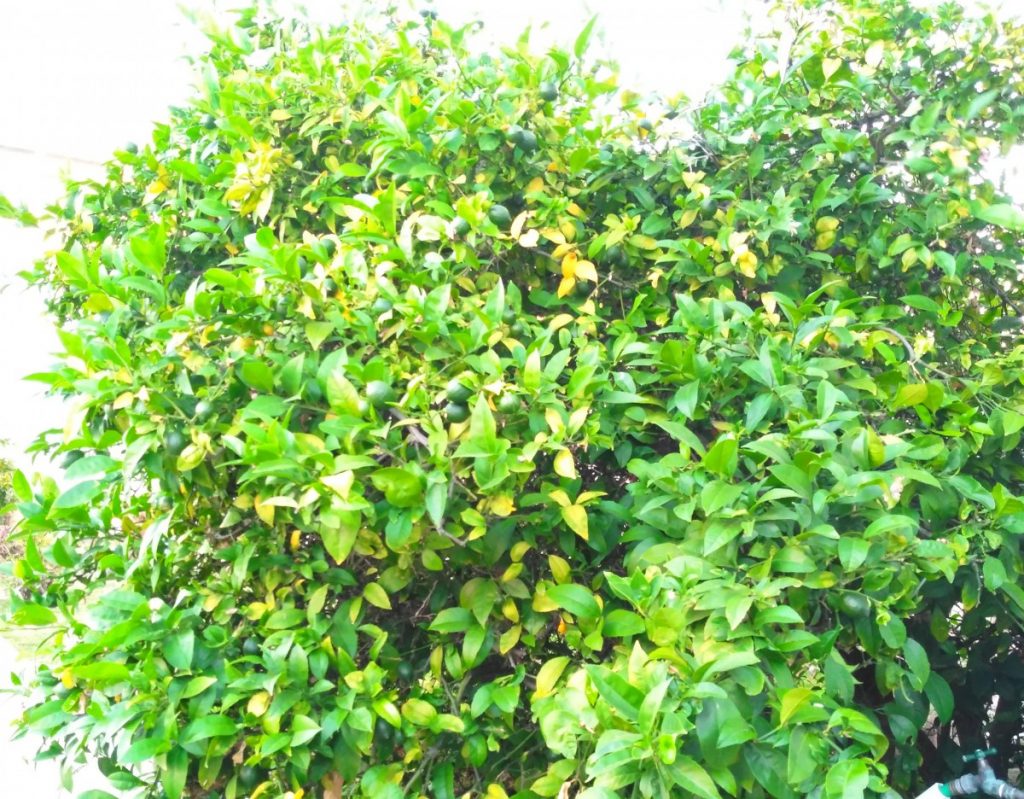
Destiny 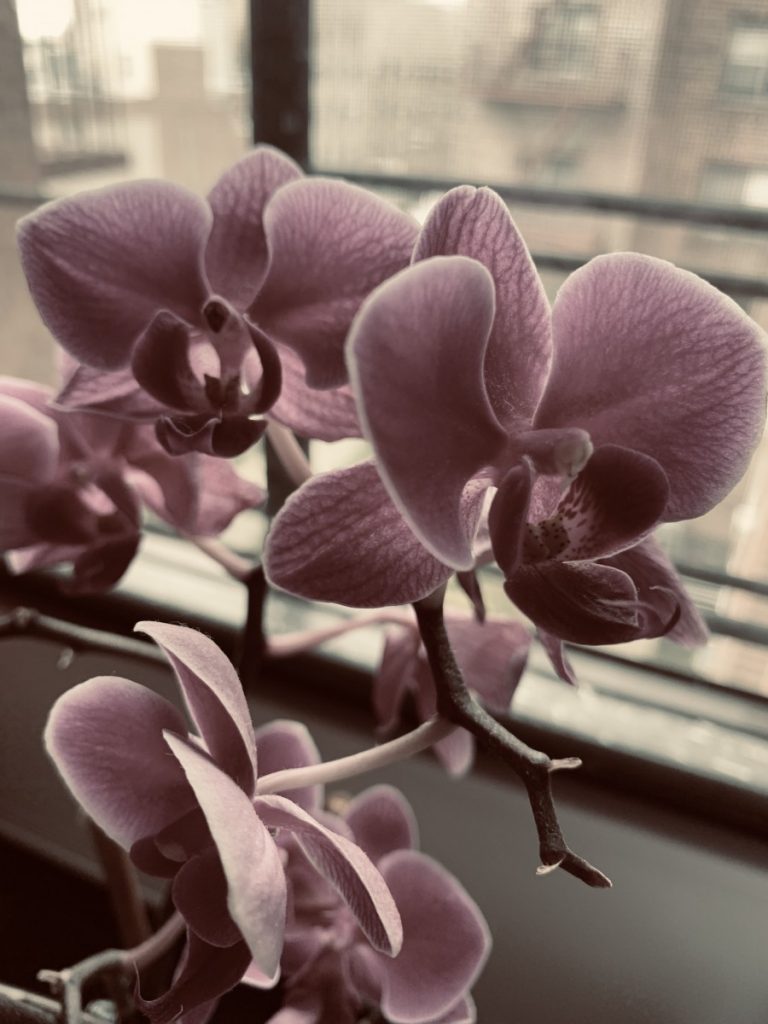
Lenny 
Cece Style 
Alice Garcia
Project #1: Curious Artifacts (60 min)

Graphic Design Thinking – Ellen Lupton 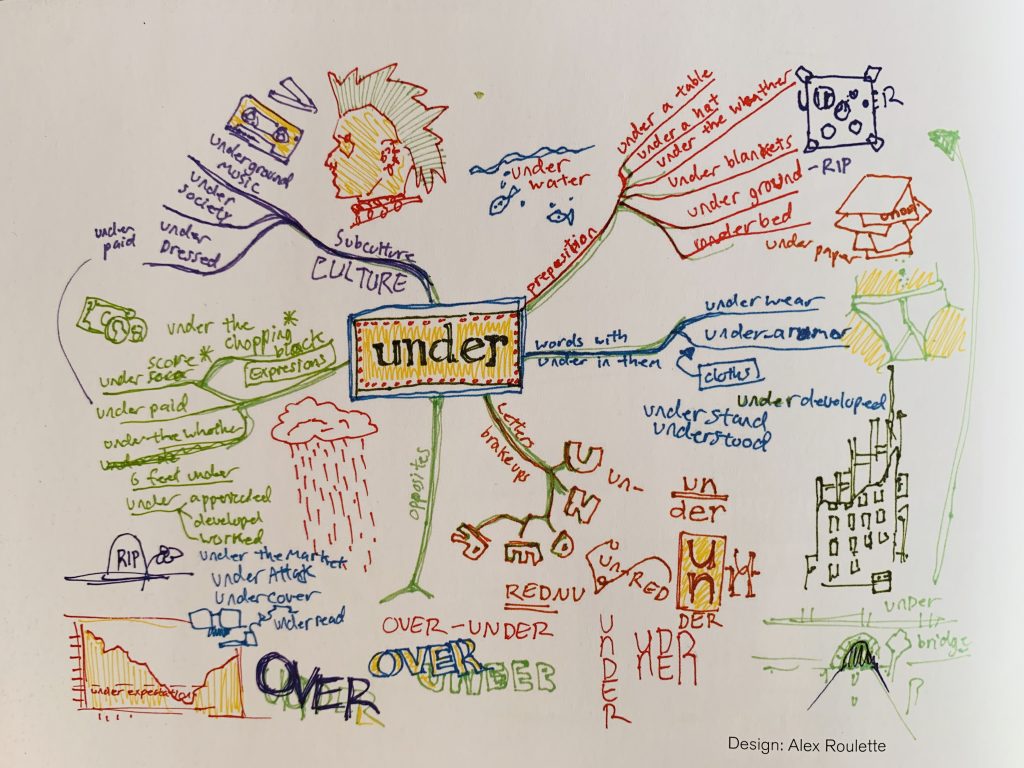
Graphic Design Thinking – Ellen Lupton 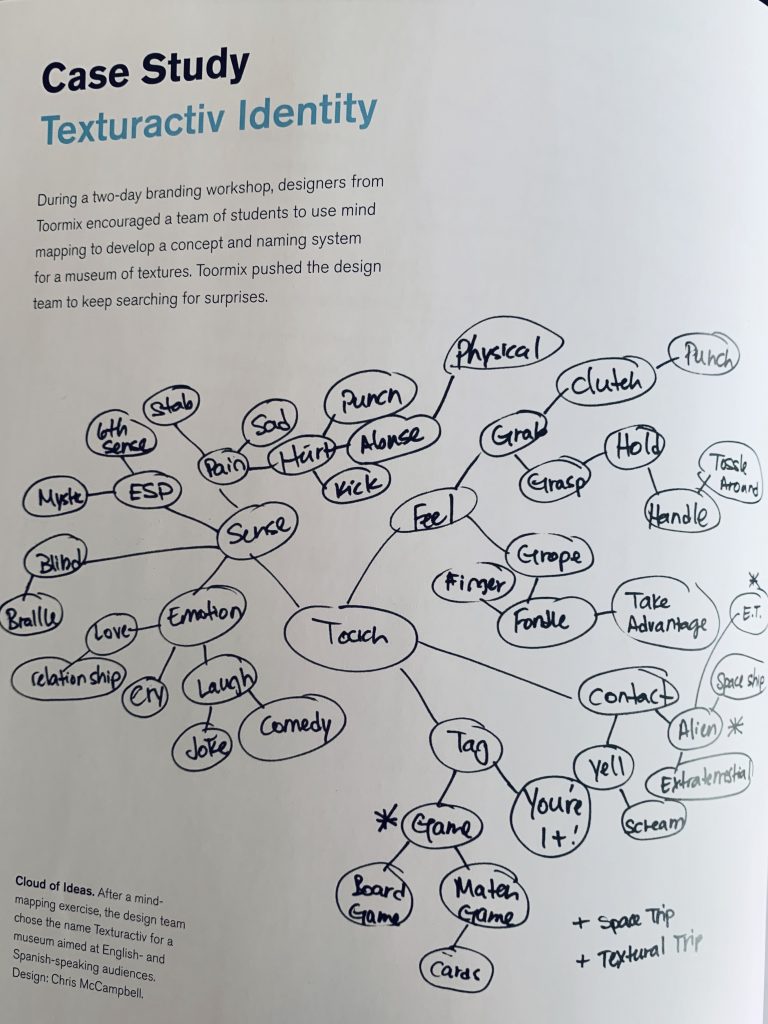
Graphic Design Thinking – Ellen Lupton
Discover: Make a Mind Map
Mind Mapping is a research tool that helps designers to quickly explore a concept or design problem. Starting with a central term or idea the designer quickly finds associated words or concepts.
- Find a quiet space to think.
- Open a fresh page in your sketchbook
- Start with a word: In the center of the paper write the word: Curiosity. Draw a box around it.
- Branch out. Draw lines out from the center box. Add words that describe the things that drive your curiosity; the things you do, think, feel, see, that give you that feeling of curiosity- of wanting to know more.
- Organize. Are there certain word or concepts that hold more importance than others or that are actually subsections of a main concept? Visually group these in some way using boxes, circles, patterns, arrows, etc.
- Subdivide. Add lines out from your main groups. List physical objects that you own or that you have seen that represent and/or drive your curiosity.
- Highlight. Choose 3 objects from all that you have listed that are most important to you and best represent your curiosity.
Write about it
In your sketchbook, preferably on the page following your mind map, write the heading: ‘Curious Artifacts.” Compose a minimum 1-paragraph explanation about why the three objects listed in your mind map drive your curiosity. Consider the relationship between these three artifacts. Find some commonality (ie: family mementos, objects from nature, a feeling, atmosphere, mood, etc.). Think about the meaning that the three artifacts convey together and separately.
Homework
- Complete the design thinking Mind Map and writing that we started in class.
- Bring in the three curiosity artifacts (actual objects or photos of objects) that you identified in your mind map.
- Post a new image to the Visual Library that demonstrates the vocabulary word: Economy (Less is More). Add the tag: Economy to your post.
Materials needed for NEXT CLASS
- Items from SUPPLY LIST**
- thumb drive or Dropbox/Google Drive access.
- sketch book (9″x12″)
- bristol pad (9”x12” 2-ply smooth plate finish)
- tracing paper (9″x12″)
- graphite drawing pencils (6B, 2B, HB, 2H, 4H)
- pencil sharpener (basic metal)
- eraser (magic rub, mars, gum or similar)
- Pigma Micron inking pens (size .02 and .05)
- Faber-Castell Pitt Big Brush Pen or Pigma Micron brush
- small box for your supplies (find or reuse)
- portfolio to transport your work
- 1 roll drafting or removable tape
- metal ruler
** Note: if you are unable to purchase these items due to financial aid delays, please contact me BEFORE the next class.
